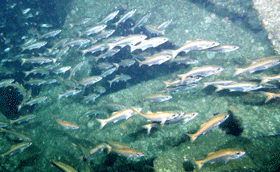Artificial reefs/Breeding reefs/Underwater survey
TEL. +81-3-6426-1024
Address: 2-11-5 Futaba, Shinagawa-ku, Tokyo, Japan〒142-0043
Random stacking installation of FP reefsPRODUCT
Random stacking installation of FP reefs can create a large-scale mass of artificial reefs that has both a complicated small space and height.
Features of random stacking installation of FP reefs
1.Artificial reefs have many complex small spaces, and create much bulk volume.
2.The complex space with shadow of artificial reefs create nursery such as spawning grounds and hiding places.
3.Highly stacked artificial reefs give a strong stimulus to migratory fish even in deep water.
4.Large-scale change of tidal near the artificial reefs strengthen feeding and resting functions.
5.Artificial reefs combination with each other and overlap increase wave resistance.
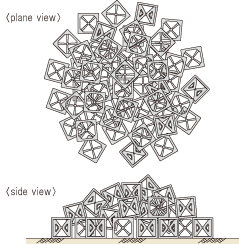 (Image of random stacking installation) |
 |
| 〈 vortex basin 〉
Around the FP reef, a complex vortex basin is generated by the flow that
passes through the inside, and the vortex basin is widespread around random stacking installation of FP reefs. |
Function of random stacking installation
| Habitat for rock fish | ||
|---|---|---|
| The complex, shaded space provides a good habitat for rock fish, such as shelters and hiding places. | ||
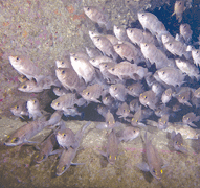 Sebastes inermis |
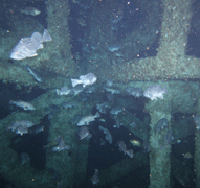 Sebastes schlegelii |
 Epinephelus septemfasciatus/Apogon semilineatus |
| Nursery for juvenile | ||
|---|---|---|
| For juvenile, the complex interior space of mass of artificial reefs serves as a refuge for piscivorous fish, and the vortex basin around artificial reefs serves as a resting place and feeding ground. | ||
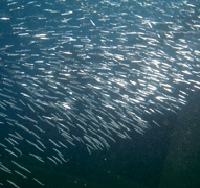 Spratelloides gracilis |
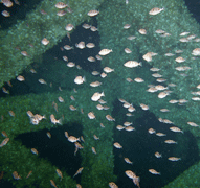 Juvenile Sebastes thompsoni |
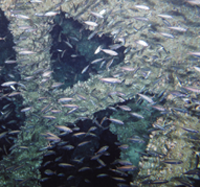 Trachurus japonicus (Immature fish season ) |
| A collection of various fish | ||
|---|---|---|
| Random stacking installation of FP reefs provide a variety of fish with suitable habitats, due to their height, wide biofouling surface, and complex internal space. Therefore, it forms an ecosystem consisting of a wide variety of fish, from juveniles to adults. | ||
 Parapristipoma trilineatum |
 Seriola quinqueradiata |
 Pleurogrammus azonus |
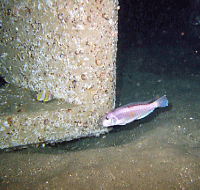 Branchiostegus japonicus |
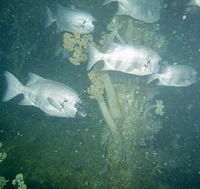 Oplegnathus fasciatus |
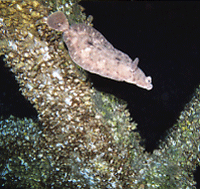 Microstomus achne |
Random stacking installation of FP reefs survey results
FP reefs has been adopted in various parts of Japan.
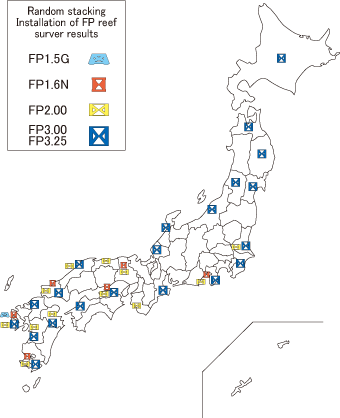 |
|||
| Random stacking installation of FP reefs survey case video (Click the photo / district name to see the video)Only Japanese |
|||
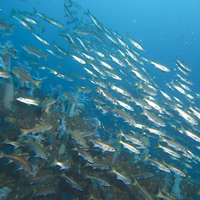
Shimoda district, Shizuoka prefecture・Water depth 40-43m・Model FP1.6N/FP3.25type ・5years after installation ・Survey date: April 2010 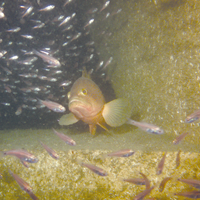
Toyoura district, Yamaguchi prefecture・Water depth 45m・Model FP1.6N/FP3.25type ・1 year after installation ・Survey date: October 2011 
Ajika district, Nagasaki prefecture・Water depth 91m・Model FP2.00/3.25type ・3 years after installation ・Survey date: July 2014 |
FP reefs that can stacked randomly
Introducing products that can be stacked randomly.
Click the artificial reef name to see the product details.
 |
 |
 |
 |
|
| FP1.5G | FP1.6N | FP2.00type | FP3.00type | FP3.25type |
 |
 |
 |
 |
|
| Inner frame Culbase attached FP3.25type |
FP3.30type | FP4.00Rtype | FP4.00type |
バナースペース
Kaiyo Doboku Co., Ltd.
Address: 2-11-5 Futaba, Shinagawa-ku, Tokyo, Japan
〒142-0043
TEL +81-3-6426-1024
FAX +81-3-6426-1034
